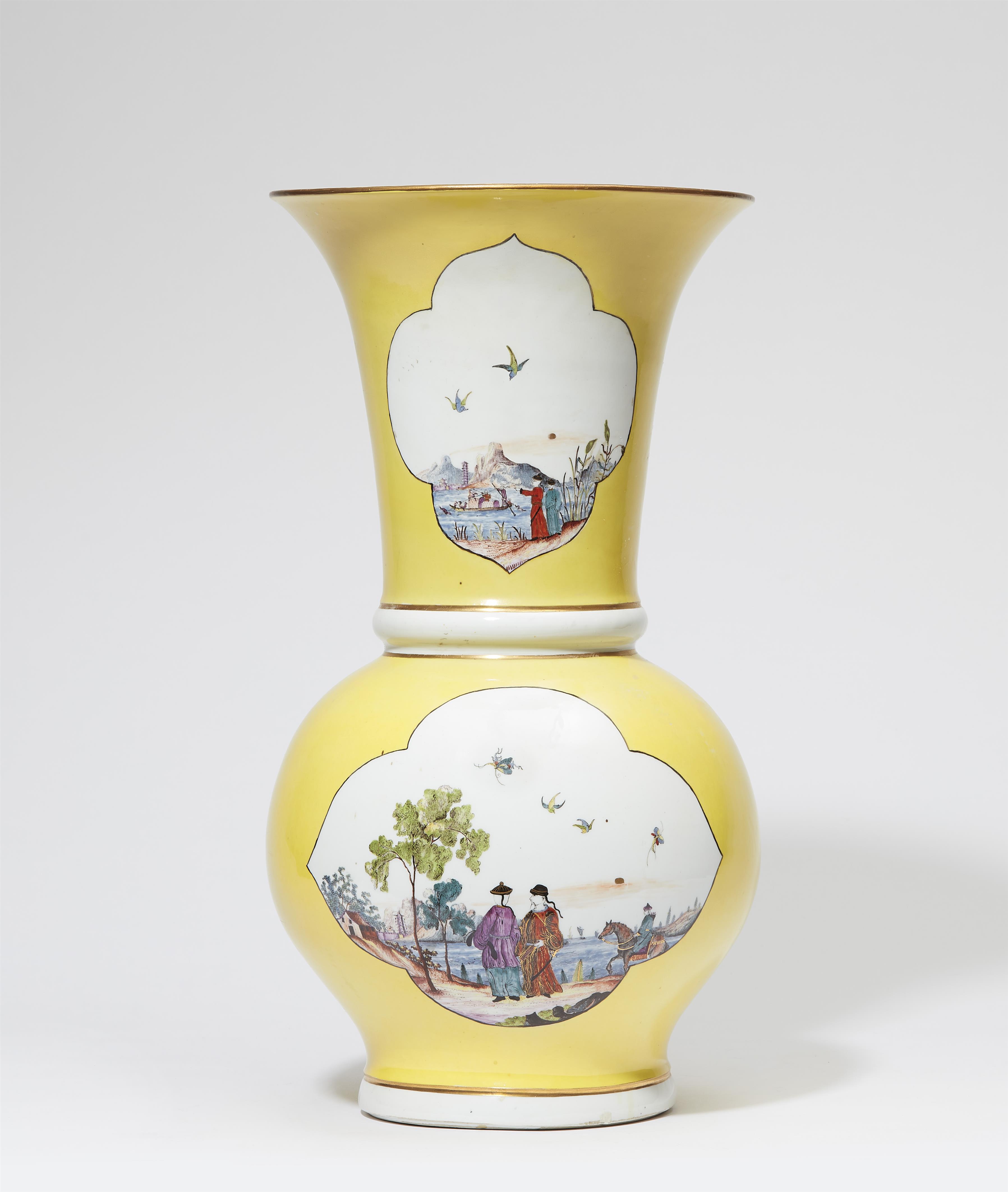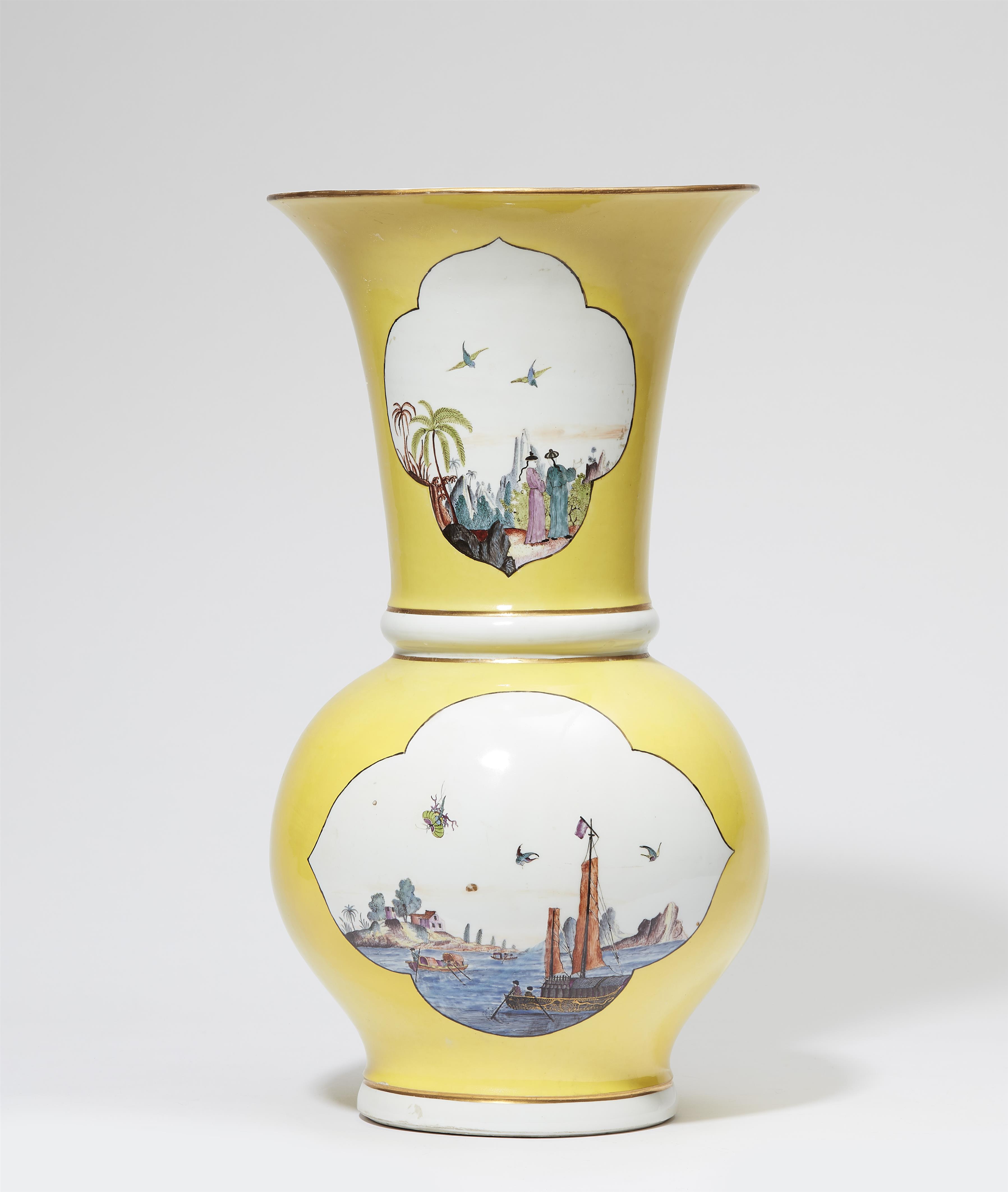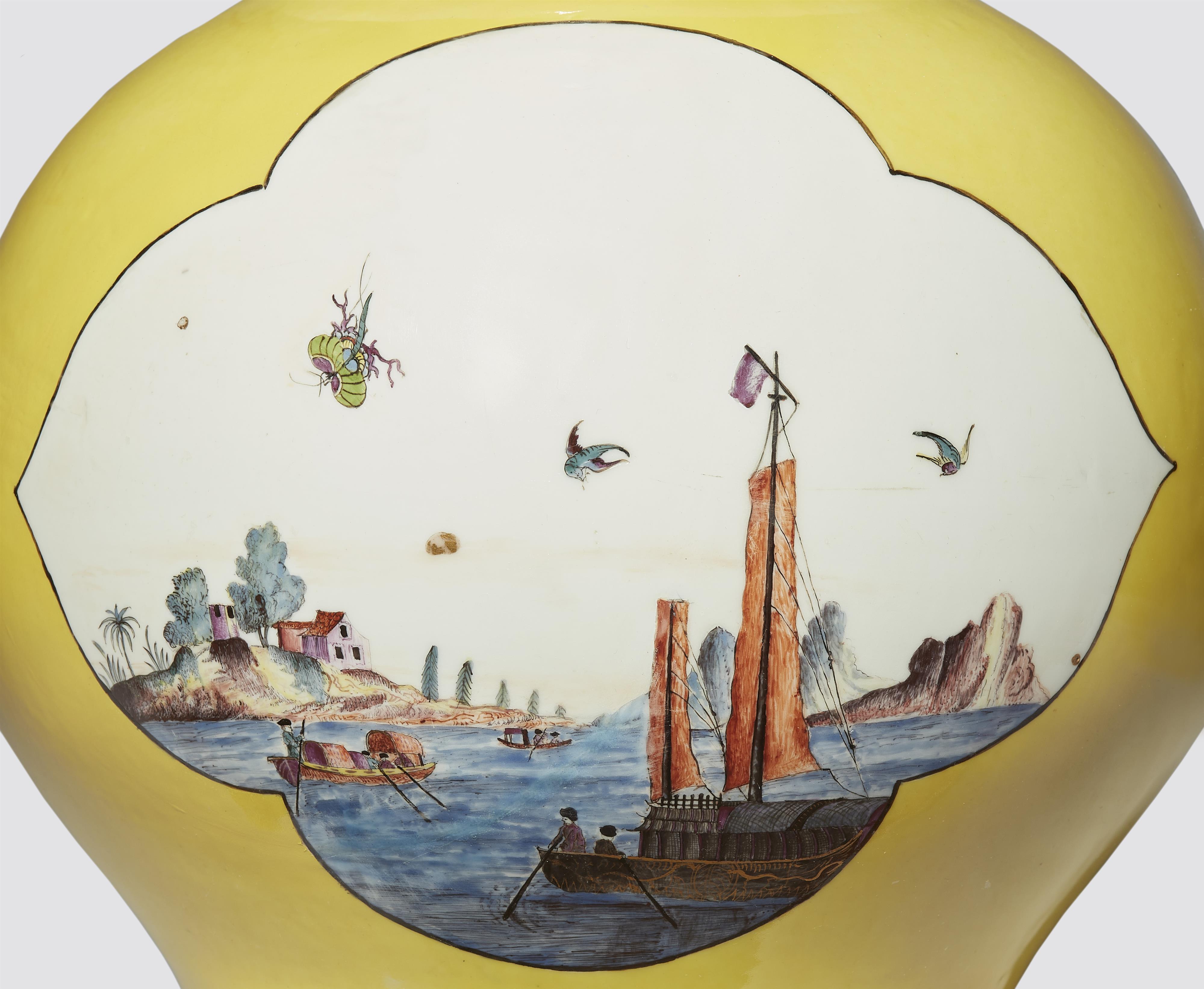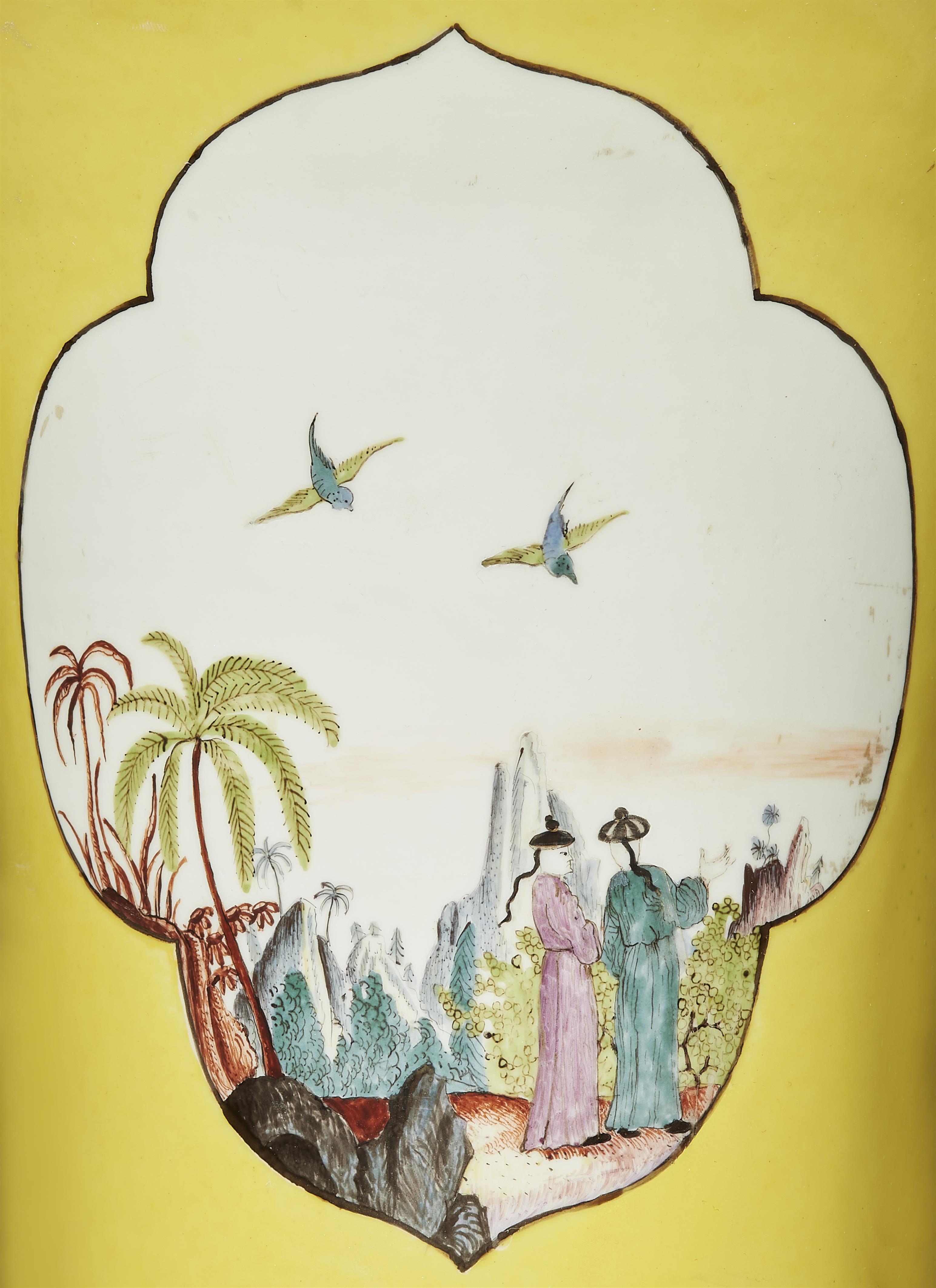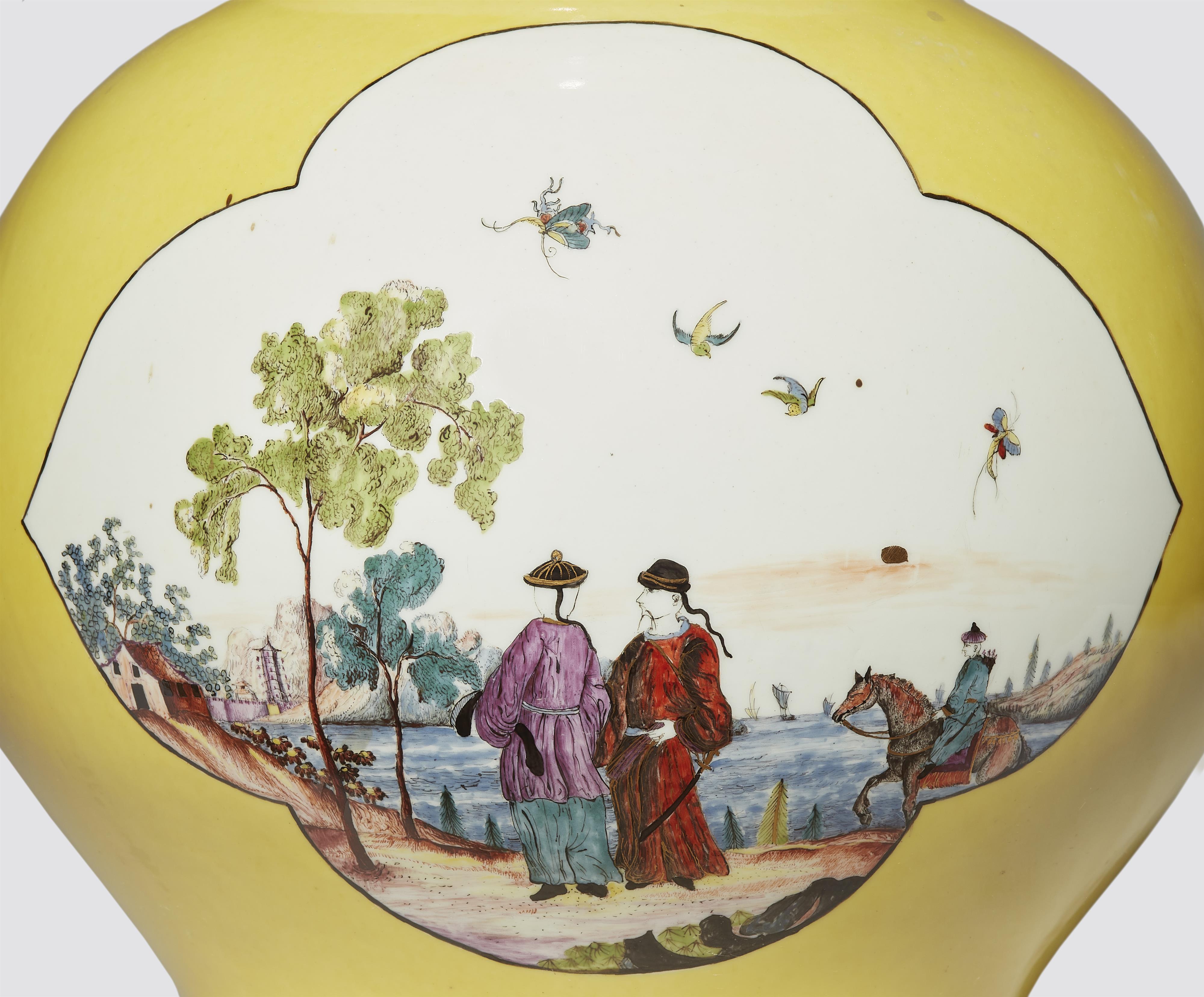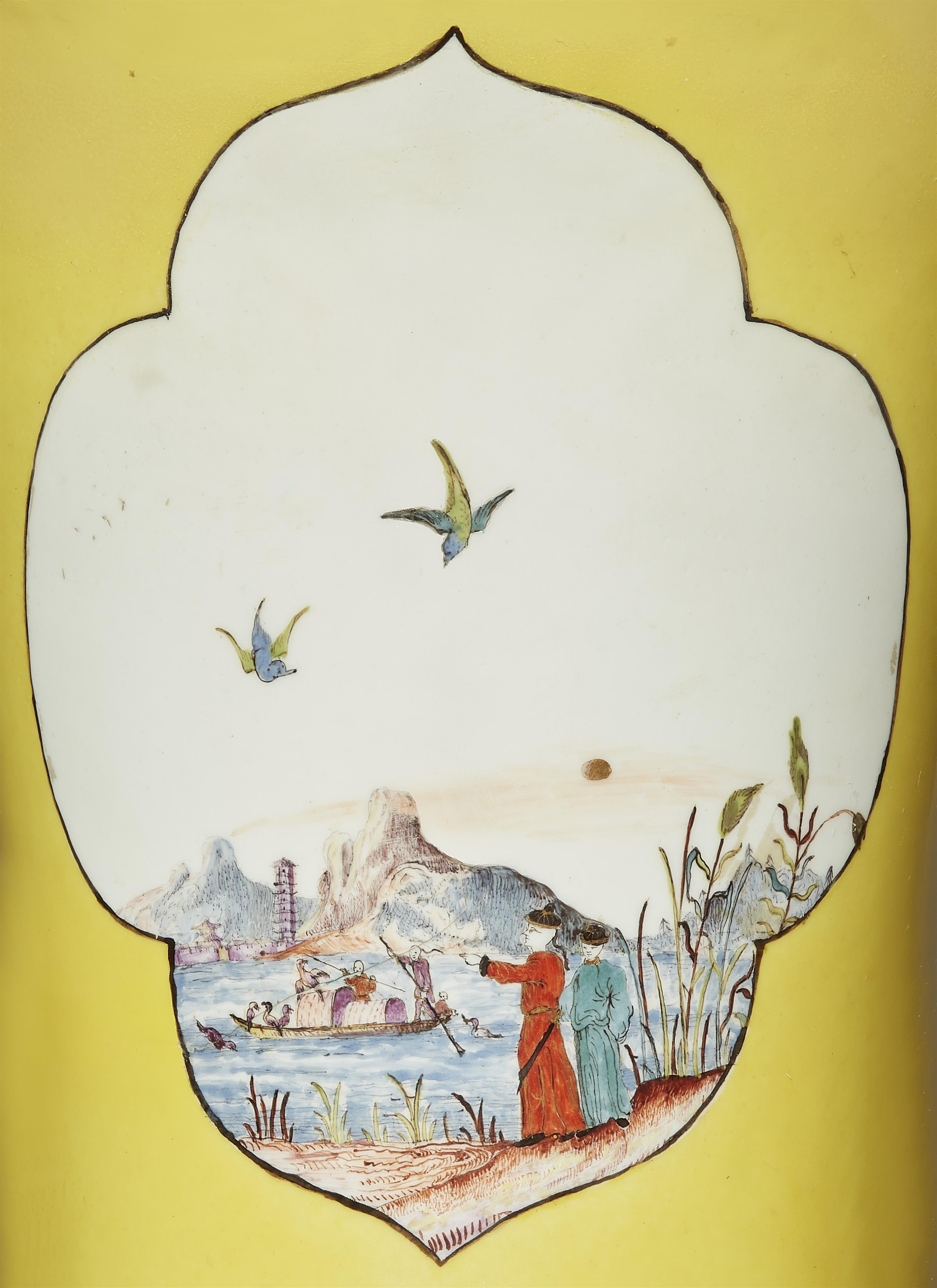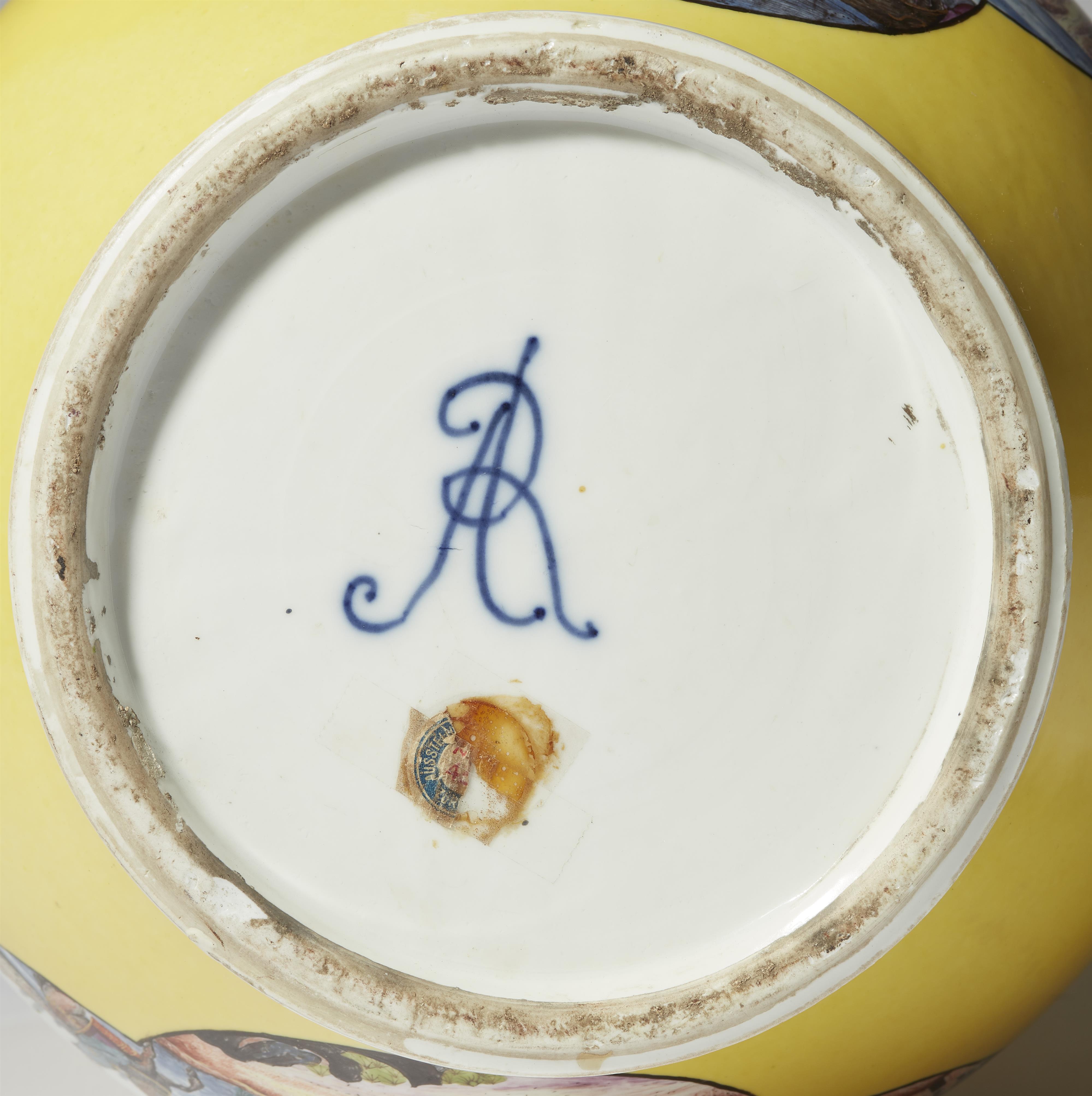A very rare Meissen porcelain yellow ground Augustus Rex vase with Chinoiserie decor
Baluster-form vase with fluted neck. Decorated with finely painted contoured Chinoiserie figures against backdrops consisting of three water landscapes and an exotic mountain landscape. H 46.5, D 24.5 cm.
C. 1735, decor attributed to Adam Friedrich von Löwenfinck.
The painter of this vase used a type of Chinoiserie clearly distinguishable from those of Hoeroldt. The figures, birds and insects are all outlined in black, which is why Abraham den Blaauwen refers to this type of decor as "contoured Chinoiseries". In Keramos issue 31/1933, Den Blaauwen suggested the series of prints by Petrus Schenk the Younger (1693 - 1775) "Nieuwe geinventeerde Sineesen, met groote moeyte geteekent en in't Ligt gegeven", which was published in two parts in the 1720s, as a possible source of inspiration for these designs. However, the depictions on this vase, as on other known vases, do not copy these models exactly, but at most use individual motifs or follow the general composition of the figures against the background.
A pair of identical vases was auctioned by Paul Graupe in Berlin from a Cologne collection on 27th March 1935. A third, similarly decorated vase, possibly part of the same set, was published in 1954 from the estate of the Lucerne art dealer Otto Büel (Mitteilungsblatt der Keramikfreunde der Schweiz 27/1954, fig. 8) and later bought at auction by Dr. Marcel Nyffeler (Christie's London on 9th June 1986, lot 175).
This vase form was rarely produced in Meissen, as the model never withstood firing without considerable damage. After annealing and cooling, all examples ended up with cracks, and sometimes, as with this example, pieces even fell out. The lower section of the body in particular was at risk. Nevertheless, all vases went into the painting room and were decorated. The present example also has a reattached breakage in the area of the reserve with the junk.
The talented painter Adam Friedrich von Löwenfinck, a dazzling personality in the porcelain world of the early 18th century, is always mentioned as the author of the decor. Rainer Rückert was the first to publish all known biographical data on Adam Friedrich von Löwenfinck in 1990. The artist was born in 1714 in present-day Poland and accepted as a painter's apprentice at the Meissen manufactory in 1727 "at his pleading request". The young man had a strong character and appears to have forged his own path quite early on, exploring the limits of the manufactory hierarchy. For us today, his work is inextricably linked with the most beautiful products of the manufactory of that time. His contoured Chinoiseries are in no way inferior to those of Hoeroldt, and his bizarre animal designs delight us today as they did the Saxon kings.
Adam Friedrich fled to Bayreuth in 1736 after a quarrel in the manufactory and suspected incidence of perjury. Just one year later we find him in again in Ansbach, but Löwenfinck had other goals. Johann Gregorius Hoeroldt passed on the rumour to the manufactory commission in June 1738 that the wanted painter was in Chantilly. This file, first published by Pietsch in 2014, would explain the similarity in decor at Meissen and Chantilly. Ulrich Pietsch also propses a previously unknown stay of Löwenfinck in Potsdam before he began producing for the Fulda faience manufactory in 1741 - 45. Löwenfinck carried his knowledge and his painting style with him to Weisenau, Höchst, Schönbornslust Palace and finally to Strasbourg and Haguenau in France, where he died early on 13th November 1754. Pietsch suggests that his death may either have been caused by the many years of handling poisonous pigments and vapours or that he may have died in an epidemic, as one of his sons and his brother also died at around the same time.
Provenance
German private collection.
Literature
Cf. den Blaauwen, Meissen Porcelain in the Rijksmusem, Amsterdam 2000, p. 229
A further piece sold by Bonhams London on 20th March 2013, lot 30.
For more on this painter see Rückert, Biographische Daten der Meißener Manufakturisten des 18. Jahrhunderts, Munich 1990, 171 ff. and Pietsch (ed.), Phantastische Welten. Malerei auf Porzellan und deutschen Fayencen von Adam Friedrich von Löwenfinck 1714 – 1754, Dresden-Stuttgart 2014, p. 12 ff. & p. 298 ff.
For this form cf. den Blaauwen, Meissen Porcelain in the Rijksmuseum, Amsterdam 2000, no. 147, for two vases in the Rijksmuseum Amsterdam (inv. BK-17358), about which Blaauwen writes: "Although the mouth of vase B is severly misshapen, the factory nonetheless decorated and delivered this set, which shows how difficult these large vases were to make. The Hermitage in St. Petersburg has another unpainted example, also marked AR and with the mouth askew." Therein further examples of this form, including two vases from a set of five in the Wadsworth Atheneum Hartford (1917.1197 and 1917.1198).
For the comparison works see Pietsch (ed.), Phantastische Welten. Malerei auf Porzellan und deutschen Fayencen von Adam Friedrich von Löwenfinck 1714 – 1754, Dresden-Stuttgart 2014, cat. no. 31 ff, for the two vases with tomato red ground from a set of five.

